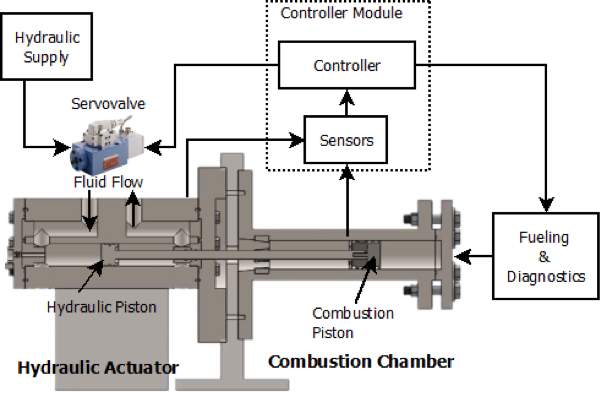PI: Zongxuan Sun, Mechanical Engineering, University of Minnesota
Co-PI: Will Northrop, Mechanical Engineering, University of Minnesota
Co-PI: Kim Stelson, Mechanical Engineering, University of Minnesota
Co-PI: David Kittelson, Mechancial Engineering, University of Minnesota
Dereck Dasrath, PhD student, Mechanical Engineering, University of Minnesota
A controlled trajectory RCEM (CT-RCEM) has been developed and built at the University of Minnesota (UMN) – Twin Cities. In contrast to traditional hydro-pneumatic machines, the CT-RCEM is powered solely by hydraulics, thus allowing complete control of piston trajectory through compression and expansion strokes. This feature opens a range of potential research beyond traditional RCEMs that include varying compression time and trajectory, maintaining isobaric dwell at TDC through piston “creep”, and examining chemical kinetics at different piston positions during compression and expansion strokes with laser diagnostics.
The driving mechanism of the CT-RCEM is a custom electro-hydraulic actuator with real-time trajectory control. By having feedback motion control, we are able to overcome common problems with hydro-pneumatic RCMs/RCEMs such as piston overshoot, rebound, or ring after reaching the intended position. The trajectory profile of the piston is fed to the hydraulic controller electronically and allows for complete flexibility of piston motion and operational parameters.
The head of the reaction chamber has multiple diagnostic accessories including a high-speed pressure transducer and gas sampling capabilities. The head can be interchanged with an optical head for in-situ species measurements using PLIF.
